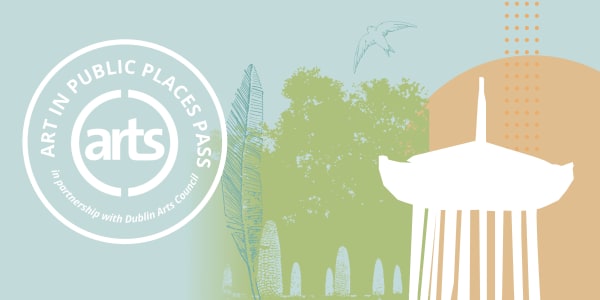2025 Celtic Cocktail Trail
- Mobile exclusive
- Instantly delivered via text and email
- No apps to download
- Explore Dublin, Ohio through Irish themed cocktails!
- Exclusive deals for passholders
Free
2025 Dublin Park Pass in partnership with OhioHealth
- Mobile exclusive
- Instantly delivered via text and email
- No apps to download
Free
2025 Art in Public Places Pass in partnership with Dublin Arts Council
- Mobile exclusive
- Instantly delivered via text and email
- No apps to download
Free
How this Pass Works

Step 1 - Get Your Pass
This mobile exclusive passport is a collection of curated attractions, retailers, restaurants and more, offering deals and discounts to redeem during your visit.

Step 2 - Receive Text
Your passport will be instantly delivered to your phone via text and email and is ready to use immediately! There is no app to download. Your pass can be saved to your phone’s home screen for easy one-tap access.

Step 3 - Redeem
When visiting a participating business, simply present your phone to the attendant or staff member to redeem available discounts.
How this Pass Works

Step 1 - Get Your Pass
This mobile exclusive passport is a collection of Dublin restaurants offering Irish themed cocktails as well as a special deals and discounts to redeem during your visit.

Step 2 - Receive Text
Your passport will be instantly delivered to your phone via text and email and is ready to use immediately! There is no app to download. Your pass can be saved to your phone’s home screen for easy one-tap access.

Step 3 - Redeem
When visiting a participating business, simply present your phone to the attendant or staff member to redeem available deals/discounts and to receive a 4 digit PIN to check-in and count towards your prize.
How this Pass Works

Step 1 - Get Your Pass
This mobile exclusive passport is a collection of parks in Dublin, Ohio for you to explore!

Step 2 - Receive Text
Your passport will be instantly delivered to your phone via text and email and is ready to use immediately! There is no app to download. Your pass can be saved to your phone’s home screen for easy one-tap access.

Step 3 - Redeem
When visiting a participating location, simply make sure your location services is turned on and check in via GPS to count towards your prize!
How this Pass Works

Step 1 - Get Your Pass
This mobile exclusive passport is a collection of curated art pieces for you to enjoy throughout Dublin, Ohio!

Step 2 - Receive Text
Your passport will be instantly delivered to your phone via text and email and is ready to use immediately! There is no app to download. Your pass can be saved to your phone’s home screen for easy one-tap access.

Step 3 - Redeem
When visiting a participating art piece, simply ensure your phone location services are turned on to check-in via GPS and count towards your prize!
How this Pass Works

Step 1 - Get Your Pass
This mobile exclusive passport is a collection of curated attractions, retailers, restaurants and more and offering deals and discounts to redeem during your visit.

Step 2 - Receive Text
Your passport will be instantly delivered to your phone via text and email and is ready to use immediately! There is no app to download. Your pass can be saved to your phone’s home screen for easy one-tap access.

Step 3 - Redeem
When visiting a participating business, simply present your phone to the attendant or staff member to redeem available discounts.
How this Pass Works

Step 1 - Get Your Pass
This mobile exclusive passport is a collection of curated art pieces for you to enjoy throughout Dublin, Ohio!

Step 2 - Receive Text
Your passport will be instantly delivered to your phone via text and email and is ready to use immediately! There is no app to download. Your pass can be saved to your phone’s home screen for easy one-tap access.

Step 3 - Redeem
When visiting a participating art piece, simply ensure your phone location services are turned on to check-in via GPS and count towards your prize!


